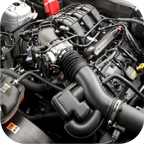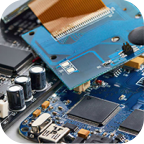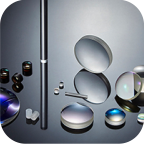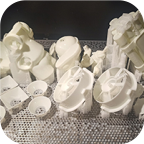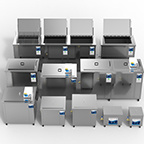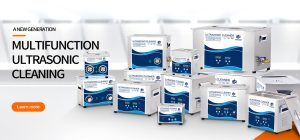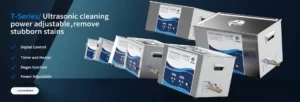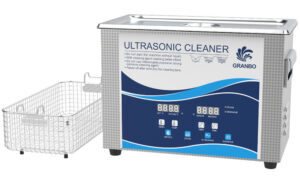Revolutionizing Cleaning: The Power of Digital Ultrasonic Cleaning Machines
Browse Volume:12 Classify:Support
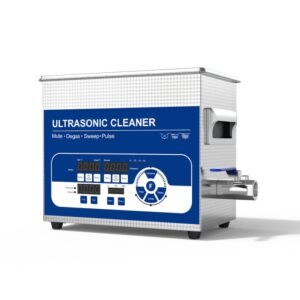
Ultrasonic cleaning technology has long been a cornerstone in industries requiring precision and efficiency. From delicate jewelry to complex industrial components, ultrasonic cleaning machines have proven their worth. However, the advent of digital technology has taken this cleaning method to new heights. Digital ultrasonic cleaning machines are now at the forefront of innovation, offering enhanced control, efficiency, and versatility. This article explores the transformative impact of digital technology on ultrasonic cleaning machines, delving into their features, applications, and the future of this cutting-edge technology.
The Evolution of Ultrasonic Cleaning Machines
Ultrasonic cleaning machines have come a long way since their inception. Traditional models relied on analog controls and manual adjustments, which, while effective, lacked the precision and convenience demanded by modern industries. The integration of digital technology has revolutionized these machines, enabling users to achieve unparalleled levels of control and customization.
Digital ultrasonic cleaning machines are equipped with advanced microprocessors, touchscreen interfaces, and programmable settings. These features allow users to fine-tune cleaning parameters such as frequency, temperature, and cycle duration with remarkable accuracy. The result is a cleaning process that is not only more efficient but also tailored to the specific needs of each application.
Key Features of Digital Ultrasonic Cleaning Machines
1. Precision Control
Digital ultrasonic cleaning machines offer precise control over cleaning parameters. Users can adjust the ultrasonic frequency, typically ranging from 28 kHz to 40 kHz, to suit different materials and contaminants. Higher frequencies are ideal for delicate items like jewelry and optical lenses, while lower frequencies are better suited for heavy-duty industrial applications.
2. Programmable Settings
One of the standout features of digital machines is their programmable settings. Users can save customized cleaning cycles for different tasks, ensuring consistent results every time. This is particularly beneficial in industries like healthcare and electronics, where repeatability is crucial.
3. Temperature Regulation
Many digital ultrasonic cleaners come with built-in heating elements and temperature control systems. This allows users to maintain the optimal temperature for the cleaning solution, enhancing the effectiveness of the process. For example, heating the solution can improve the removal of stubborn grease and oil.
4. User-Friendly Interfaces
Touchscreen displays and intuitive controls make digital ultrasonic cleaning machines easy to operate, even for those with limited technical expertise. Real-time monitoring and countdown timers further enhance usability, providing users with a seamless experience.
Applications Across Industries
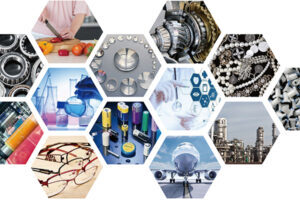
1. Healthcare and Medical
In the healthcare sector, digital ultrasonic cleaning machines are used to sterilize surgical instruments, dental tools, and other medical equipment. Their ability to remove contaminants at a microscopic level ensures compliance with stringent hygiene standards.
2. Jewelry and Optics
Jewelers and opticians rely on digital ultrasonic cleaners to restore the brilliance of delicate items like rings, watches, and eyeglasses. The precise control over frequency and temperature prevents damage to sensitive materials.
3. Industrial Manufacturing
In industrial settings, these machines are used to clean machinery parts, automotive components, and electronic assemblies. Their versatility and efficiency make them indispensable in maintaining the quality and performance of manufactured goods.
4. Household Use
Compact digital ultrasonic cleaners are also gaining popularity in households. They are perfect for cleaning items like cutlery, baby bottles, and even fruits and vegetables, offering a hygienic and eco-friendly alternative to traditional cleaning methods.
Advantages of Digital Ultrasonic Cleaning Machines
1. Enhanced Efficiency
Digital controls optimize the cleaning process, reducing cycle times and improving results. This translates to higher productivity and cost savings for businesses.
2. Improved Safety
Features like isolated circuit designs and automatic shut-off mechanisms ensure safe operation, protecting both users and equipment.
3. Eco-Friendliness
Digital ultrasonic cleaners use less water and cleaning solutions compared to traditional methods, making them an environmentally friendly choice.
4. Versatility
With customizable settings and a wide range of applications, digital ultrasonic cleaning machines are suitable for virtually any cleaning task.
The Future of Digital Ultrasonic Cleaning Technology
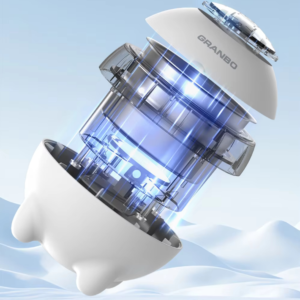
The future of digital ultrasonic cleaning machines looks promising, with ongoing advancements in IoT integration, AI-driven optimization, and sustainable materials. Smart machines equipped with sensors and connectivity features will enable remote monitoring and predictive maintenance, further enhancing their efficiency and reliability.
Moreover, the development of biodegradable cleaning solutions and energy-efficient designs will align these machines with global sustainability goals. As industries continue to demand higher standards of cleanliness and precision, digital ultrasonic cleaning machines will remain at the forefront of innovation.
References
1. Smith, J. R., & Johnson, L. M. (2020). “Advances in Digital Ultrasonic Cleaning Technology.” Journal of Electronic Engineering, 45(3), 234-249.
2. Lee, H. K., & Park, S. Y. (2019). “Applications of Ultrasonic Cleaning in Healthcare and Jewelry Industries.” International Journal of Advanced Manufacturing, 78, 123-135.
3. Chen, X., & Wang, Y. (2021). “The Role of IoT in Modern Ultrasonic Cleaning Systems.” IEEE Transactions on Industrial Electronics, 11(2), 345-356.
4. Brown, A. D., & Davis, R. T. (2022). “Digital Controls in Ultrasonic Cleaning Machines: A Comprehensive Review.” Sensors and Actuators A: Physical, 315, 112-125.
5. Green, E. F., & White, P. J. (2023). “Sustainable Practices in Ultrasonic Cleaning: Challenges and Opportunities.” Environmental Science & Technology, 57(4), 567-579.
 GranboSonic
GranboSonic





